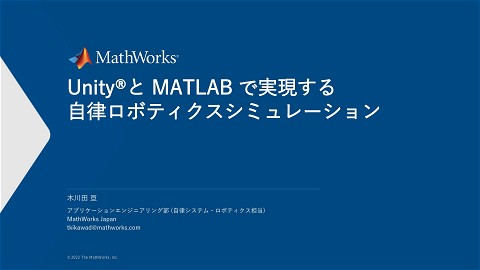【Unite 2017 Tokyo】C#ジョブシステムによるモバイルゲームのパフォーマンス向上テクニック
482 Views
May 10, 17
スライド概要
講演者:フランシス・デュランシー(Unity Technologies)
こんな人におすすめ
・プログラマー全般
受講者が得られる知見
・どういう場合にC#ジョブシステムを使ってパフォーマンス向上が可能か
・ジョブ最適化のためにプロファイラーを使う方法
講演動画:https://youtu.be/Sk05trC3gGs
リアルタイム3Dコンテンツを制作・運用するための世界的にリードするプラットフォームである「Unity」の日本国内における販売、サポート、コミュニティ活動、研究開発、教育支援を行っています。ゲーム開発者からアーティスト、建築家、自動車デザイナー、映画製作者など、さまざまなクリエイターがUnityを使い想像力を発揮しています。
関連スライド
各ページのテキスト
C# Jobs System
Francis Duranceau Lead Field Engineer, Unity
Warning • This design and feature implementation is not final and will change by the time it is out. • It still gives you a very good overview of what Unity wants to offer.
Plan • Jobs 101 • Changes in Unity • What is coming in 2017.x • Best practices to “jobify” some tasks • AI example
Jobs 101 Why? • It is a way for games to use the other cores in a simple manner when they are available What is a job? • A job is a function that performs a set of actions on a set of data • Data driven / Data centric approach (think SIMD, but spread out) • Most efficient when it can be done independently and in parallel
Jobs 101 - Continued When to use jobs? • Not all your systems can be turned into jobs • Dependencies • Some algorithms lend themselves better than others. • Repetitive, independent data generally a good target • Example: Path Finding, Transformations, Flocks, etc.
Jobs 101 - Continued Synchronization • When executing multiple jobs over multiple processors, need a means to synchronize data. • Solution: Fencing • A Fence is a primitive that allows you to coordinate jobs and wait for data to be available • A main thread kicks off a number of jobs and waits for fence to be cleared • Once cleared, results can either be passed on to other jobs / collated.
Jobs 101 - Continued Internally, Unity already has a job system in C++ that drives a lot of systems. • With 2017, modularization and the process of exposing underlying systems means we’ve opened up our internal job system… but made it available in C# • Using C# it’s less difficult to make mistakes • Power and flexibility combined with easy of use! Targetted in 2017.2, or 2017.3, or 2018.x
Jobs 101 - Continued
Jobs 101 - Continued
Jobs 101 - Continued
Jobs 101 - Continued Jobs, or multi-threading an algorithm is a trade off between Effort (how much CPU usage to complete some amount of work) and Latency (how fast you want the result back) If you build a table, by yourself, it's simpler than coordinating a team... but the team can do it faster You are making a choice • To coordinate your jobs, it will cost you memory and time to organize/distribute your jobs
Jobs 101 - Continued Not all algorithm works well You might have to redesign a naive design to organize the data so it works iPhone 5S : has two threads, one for main, one for rendering ... if you add 6 more threads, then you may impact the performance and reduce it
Changes in Unity
Changes in Unity Internal changes - TransformHierarchy - TransformChangeDispatch
What is coming in 2017.x
What is coming • Jobs • New C# attributes • New types • Intrinsic (float3 for instance) • NativeArray are new VALUE type. It's a struct. • The data is actually in native and the handle enforces threading restriction and allows access from native of C# without marshaling • Accessible on both sides (C++ and C#) • And you will need to dispose of them • New compiler • Only used on jobs
public class JobifiedBehaviour : MonoBehaviour
{
public struct JobifiedData
{
[ReadOnly]
public NativeArray<float> inData;
public NativeArray<float> outData;
public void Execute(int index)
{
outData[index] = inData[index] + 1.0;
}
}
void Update()
{
JobifiedData jobData = new JobifiedData();
jobData.inData = new NativeArray<float>(100, Allocator.Persistent);
jobData.outData = new NativeArray<float>(100, Allocator.Persistent);
jobData.Schedule(100, 2).Complete();
jobData.inData.Dispose();
jobData.outData.Dispose();
}
}
Why is the new compiler so much faster? • Works with intrinsic types • Knows about vectorization • SIMD • Using math asm calls • C# is just a VM… Trade off between performance and precision SIN -> lookup table, other math optimizations Mono compiler to IL -> IL to internal domain model -> optimize -> send to LLVM -> write executable code in memory
What it is NOT for • Jobs over multiple frames • Algorithms that may not converge • Call the Unity API or .NET API on other threads
Best practices to jobify
Best practices • Data Oriented Design (DOD) • Mainly used to optimize data layout for a physical architecture Be careful, it might not be true for all hardware... You may even want different data org for different tiers of hardware -> Use our Device Intelligence! • Design for cache coherency • Group data physically in memory In C# that means struct in arrays • Forget MonoBehaviour based designs
Best practices TLDR; You want to put things in arrays and process them in order Note : This also works with single threaded architecture
Best practices – Steps 1 – Old school MonoBehaviour design 2 – Move Functionality to Component System 3 – Change simple data to IComponentData Manager containing NativeList of that data is automatically created for you 4 - Switch to Multithreaded updating using C# job system
Best practices – Step 1 public class RotatorOnUpdate : ScriptBehaviour { [SerializeField] float m_Speed; public float speed { get { return m_Speed; } set { m_Speed = value; } } protected override void OnUpdate () { base.OnUpdate (); transform.rotation = transform.rotation * Quaternion.AngleAxis (m_Speed * Time.deltaTime, Vector3.up); } }
Best practices – Step 2
namespace ECS
{
public class RotationSpeedComponent : ScriptBehaviour
{
public float speed;
}
public class RotatingSystem : ComponentSystem
{
// NOTE: InjectTuples scans all [InjectTuples] in the class
// and returns the union of objects that have both Transform and LightRotator
[InjectTuples]
public ComponentArray<Transform> m_Transforms;
[InjectTuples]
public ComponentArray<RotationSpeedComponent> m_Rotators;
[...]
Best practices – Step 2 [...] override protected void OnUpdate() { base.OnUpdate (); float dt = Time.deltaTime; for (int i = 0; i != m_Transforms.Length;i++) { m_Transforms[i].rotation = m_Transforms[i].rotation * Quaternion.AngleAxis(dt * m_Rotators[i].speed, Vector3.up); } } } }
Best practices – Step 3
//
//
//
//
//
//
//
New light weight component is a struct.
The data is stored in a NativeArray owned by a LightWeightComponentManager<>
* Data is stored in tightly packed array (Good for performance and also allows for
safe jobification)
* Allows for light weight components to live without their game object,
enabling massive scale lightweight simulation (Think 2M instances in certain games)
[Serializable]
public struct RotationSpeed : IComponentData
{
public float speed;
public RotationSpeed (float speed) { this.speed = speed; }
}
Best practices – Step 3 public class RotatingSystem : ComponentSystem { // NOTE: InjectTuples scans all [InjectTuples] in the class // and returns the union of objects that have both Transform and LightRotator [InjectTuples] public ComponentArray<Transform> m_Transforms; [InjectTuples] public ComponentDataArray<RotationSpeed> m_Rotators; [...]
Best practices – Step 3 [...] override protected void OnUpdate() { base.OnUpdate (); float dt = Time.deltaTime; for (int i = 0; i != m_Transforms.Length;i++) { m_Transforms[i].rotation = m_Transforms[i].rotation * Quaternion.AngleAxis(dt * m_Rotators[i].speed, Vector3.up); } } }
Best practices – Step 4 public class SystemRotator : ComponentSystem { // NOTE: InjectTuples scans all [InjectTuples] in the class // and returns the union of objects that have both Transform and LightRotator [InjectTuples] public TransformAccessArray [InjectTuples] public ComponentDataArray<RotationSpeed> [...] m_Transforms; m_Rotators;
Best practices – Step 4 [...] protected override void OnUpdate() { base.OnUpdate (); var job = new RotatorJob(); job.dt = Time.deltaTime; job.rotators = m_Rotators; job.Schedule(m_Transforms); } [...]
Best practices – Step 4
[...]
struct RotatorJob : IJobParallelForTransform
{
public float dt;
[ReadOnly]
public ComponentDataArray<RotationSpeed>
rotators;
public void Execute(int i, TransformAccess transform)
{
transform.rotation = transform.rotation *
Quaternion.AngleAxis(dt * rotators[i].speed, Vector3.up);
}
}
}
Boids - bird-oid object simulation • Lets’s look at the code…
Example of AI for an RTS
RTS • Rethink your normal A* algorithm • Tiling system • Influence map • Hierarchical Graph were you calculate nodes in jobs and then do a simpler traversal of the graph • If you use a BlackBoard as a knowledge database • It is easy to create small jobs on a per unit/squad basis • You can precalculate multiple jobs in parallel that are then going to be used as knowledge sources for the BlackBoard Automated planning
Thank you!





